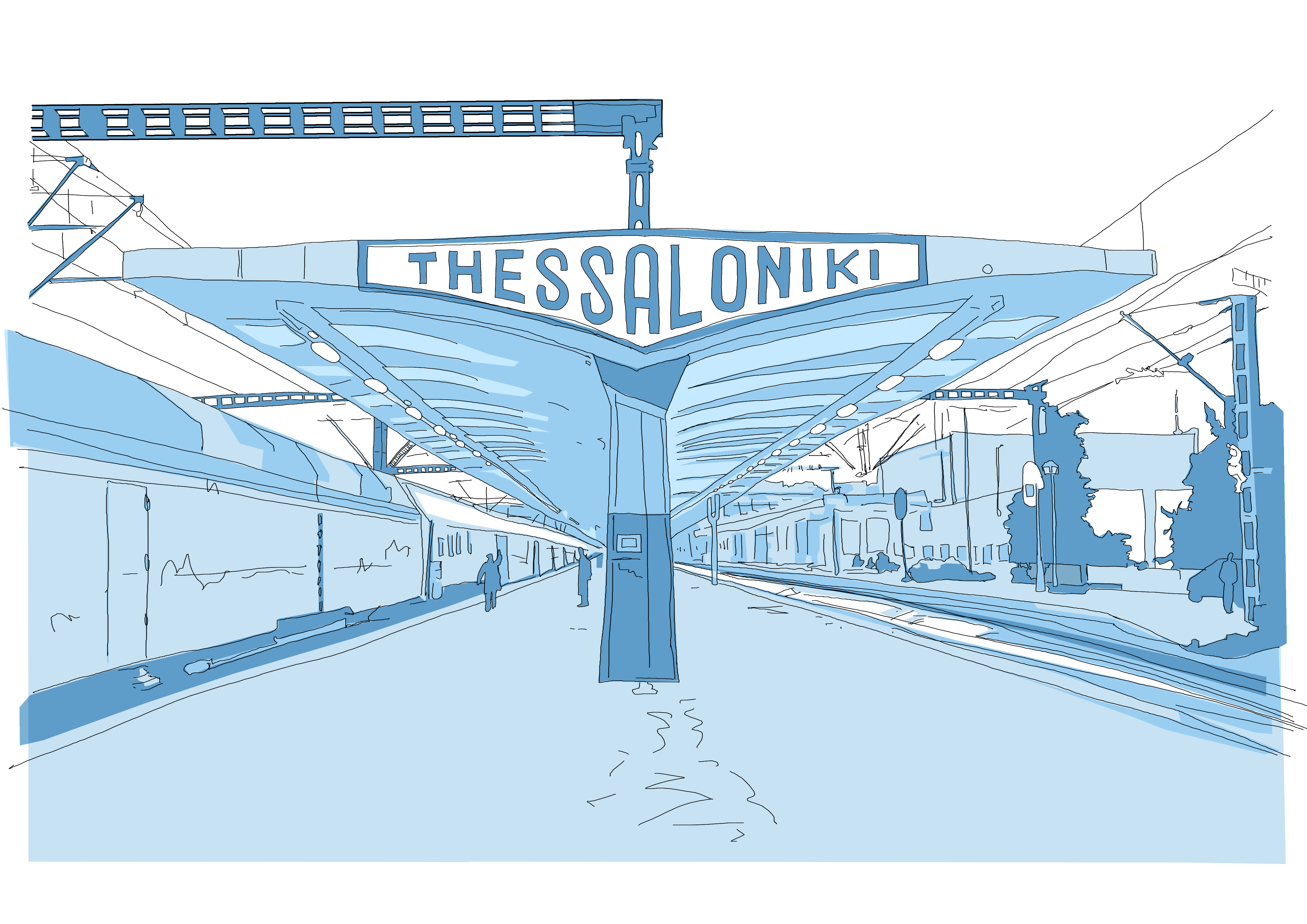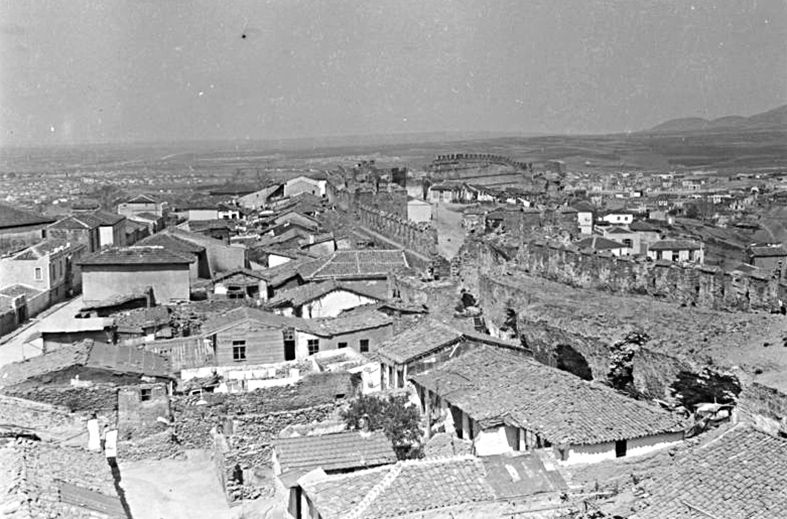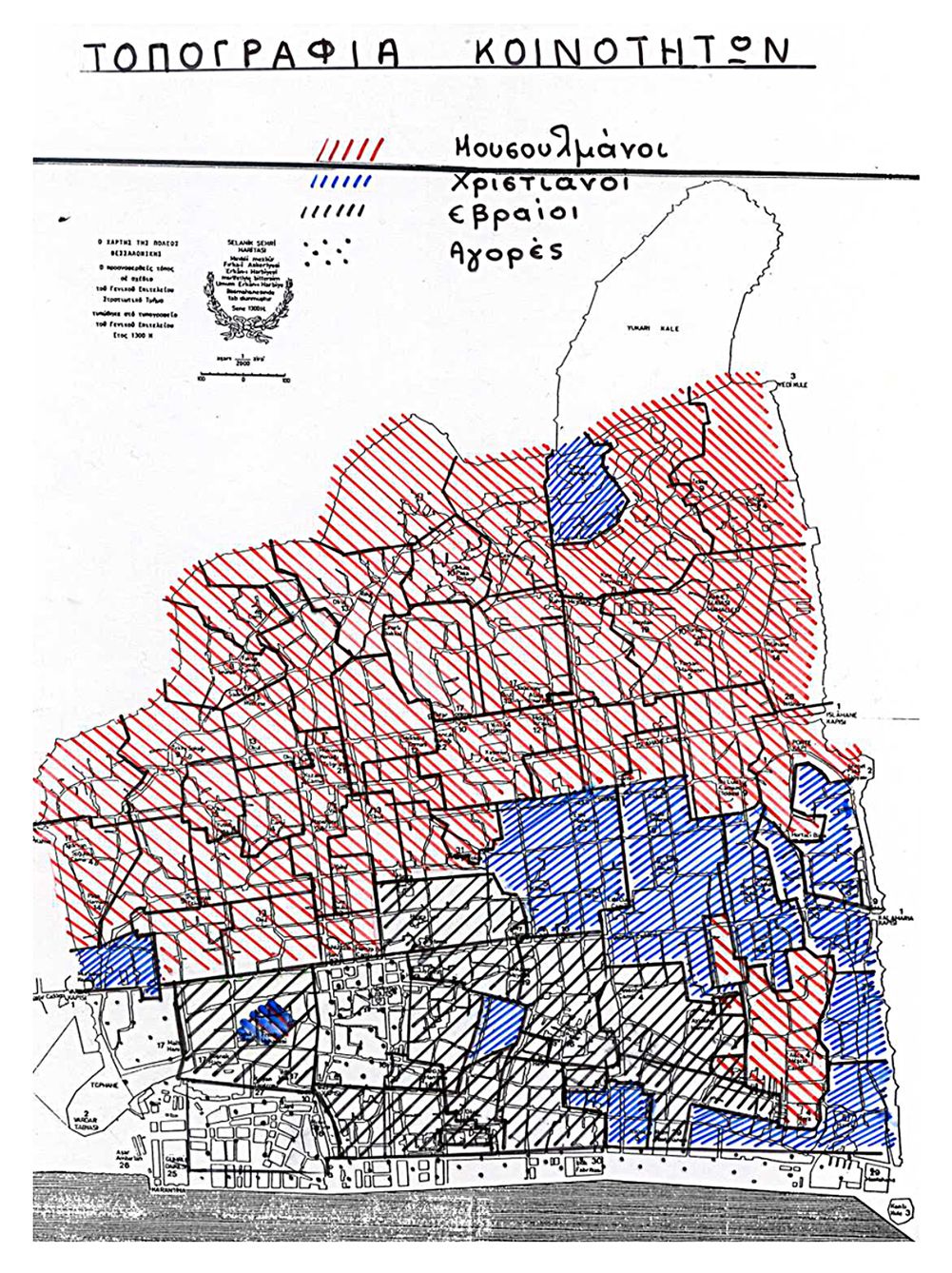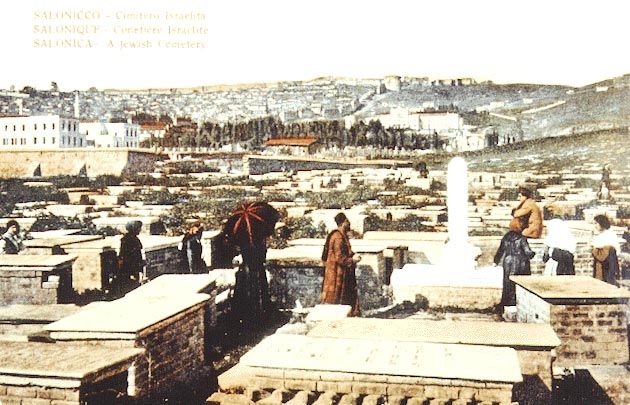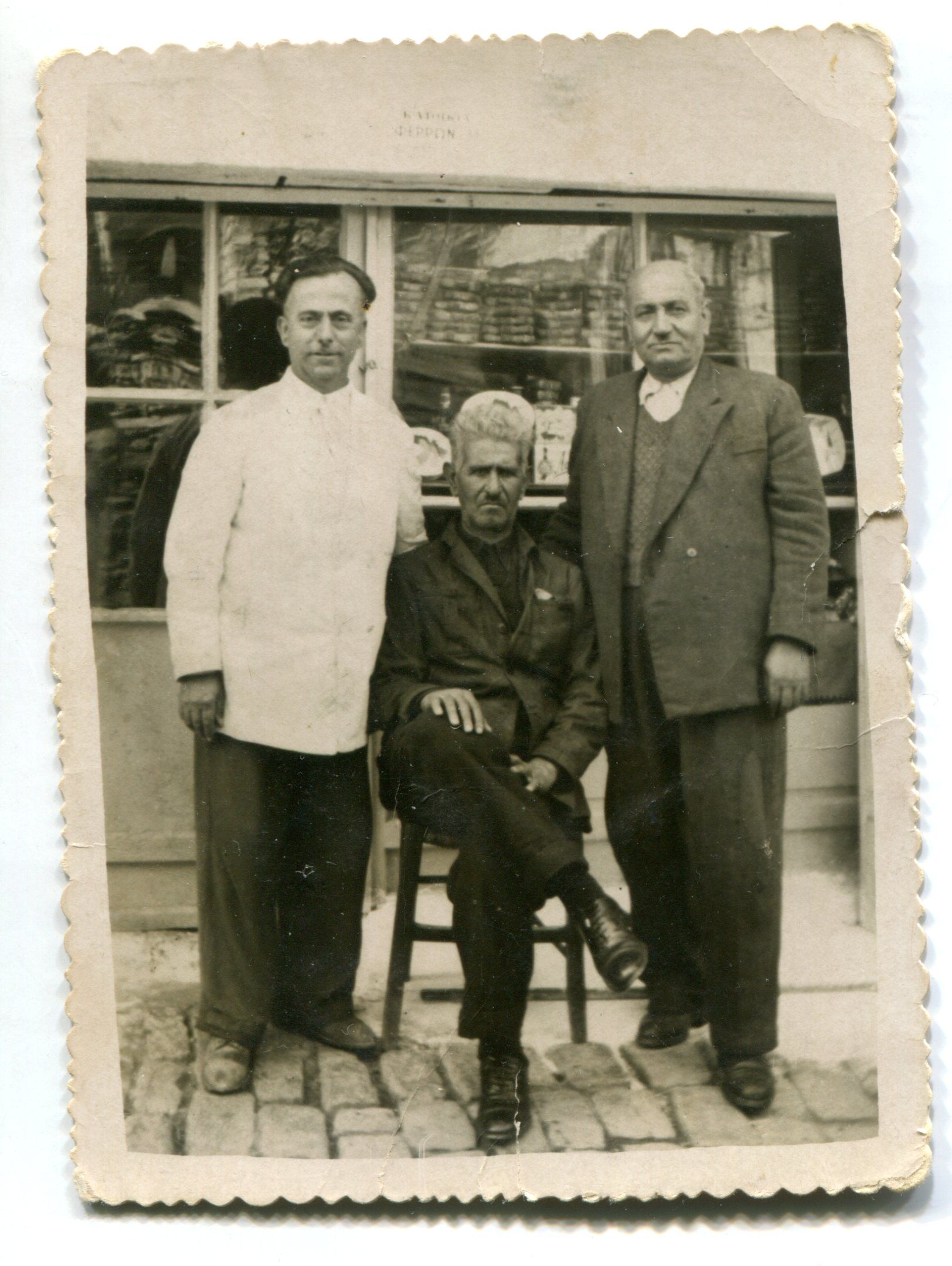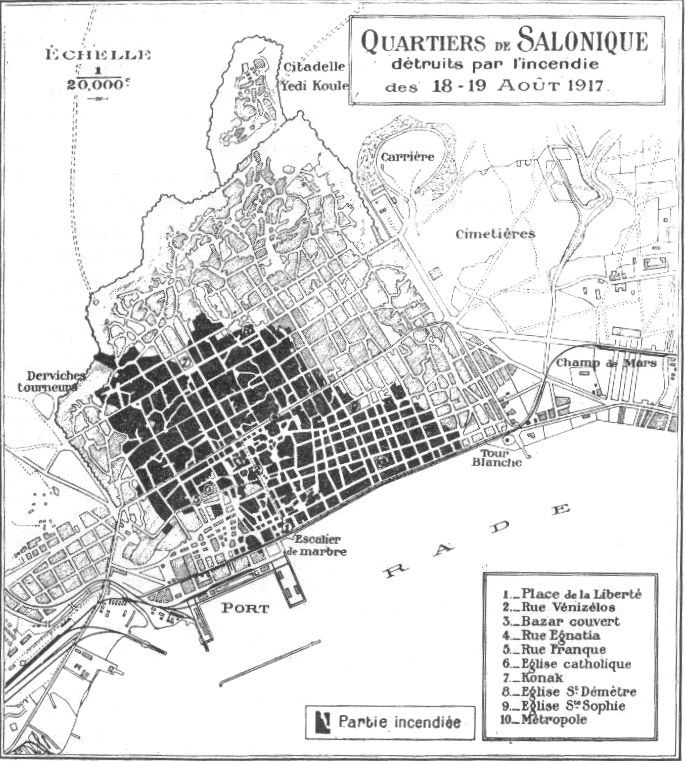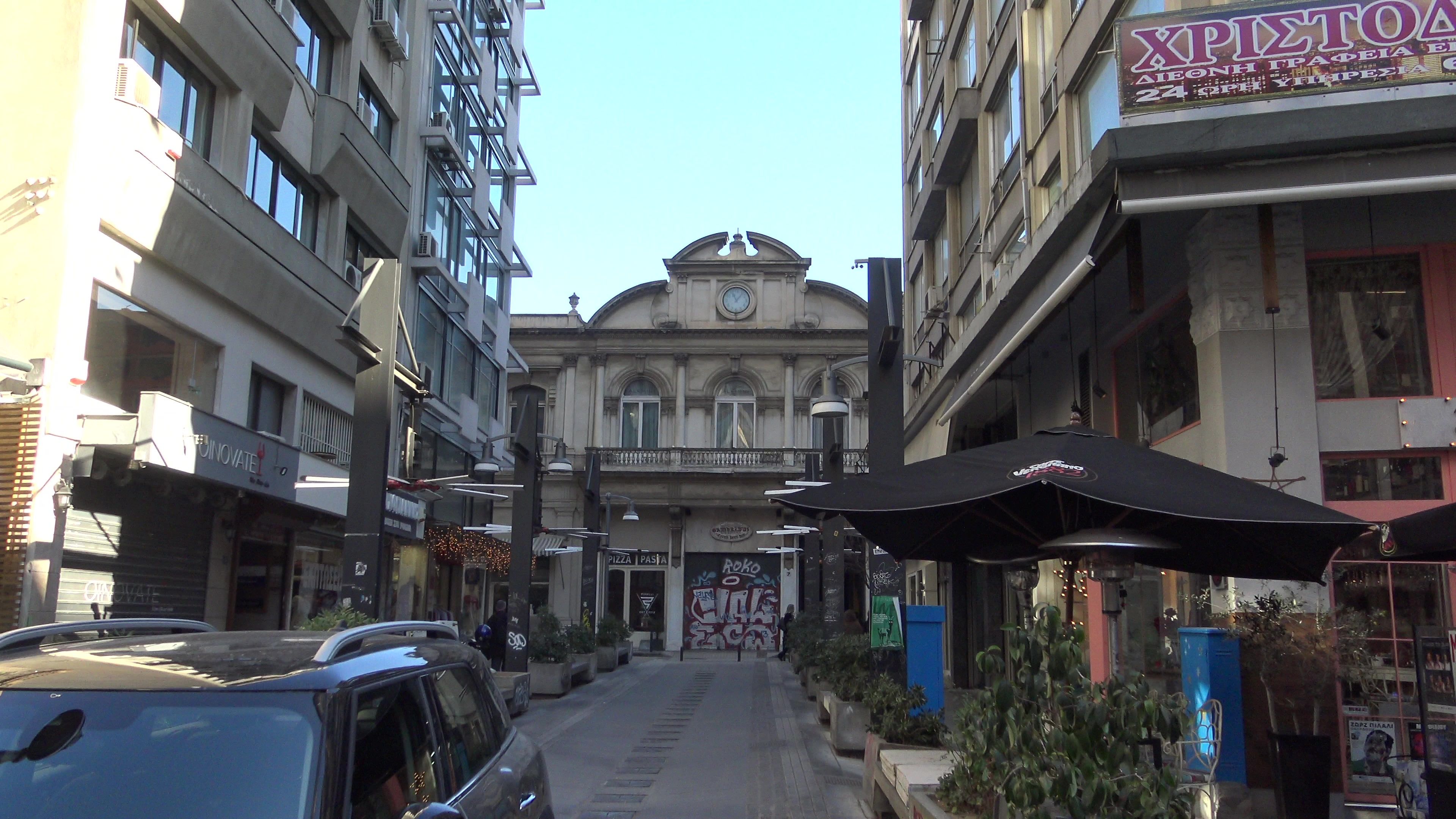How many people have stood where you are standing now over the course of time? How much has the view around you changed over the years? What do you look at and what do you look past when you wander around the city? Welcome to the historical walk organised by the 100memories research project. Whether you choose to walk with us physically or digitally, you will get a chance to visit places where the city’s residents live their everyday lives. They might seem insignificant, but it is in these insignificant spaces that we can discover histories of movement, settlement and residence, involving both natives and newcomers, during the 20th century. By tracing these histories, we will also be tracing the development of Thessaloniki’s urban fabric, society, economy and culture.
Ano Poli - Thessaloniki
In the 1990s, a language that had not been heard in the streets of Thessaloniki for years reappeared. The first generation of Turkish-speaking refugees had become scarce. Gradually, however, in bazaars, buses, and yapias, Turkish was heard again. The Pontians of Chalka, a region of Georgia, overwhelmingly Turkish-speaking, had relocated to the city. These people were one of the many populations that had moved to or from Thessaloniki during the previous and current century.
‘“Kastroplikta” are the most distinctive features of the refugee period. People from the lowest economic strata found shelter along the city wall, a place where it would only take three walls to build a home, a place they could nestle against and feel safe. Made out of adobe and other humble materials, the houses were built by the refugees themselves because there were no professional builders. These houses were the most dramatic expression of the refugee condition because they embodied the tragedy inherent in the struggle for survival. (…) During the war, there was always the danger that the houses would collapse and crush their residents because the vibrations from the bombardments could cause the shabby materials to crumble. The people would dig into the wall and use it as a bomb shelter. (…) The wall was wide, so they turned part of it into a nest they could crouch in and protect themselves. This later became kitchen space. So, they used the extra space created for the war to expand their homes and serve their needs.’
Mustafa Zihni Paşa is one of the five remaining mosques in Thessaloniki today and is a typical example of a small, neighbourhood mosque of the late Ottoman period. It was built on the foundation of an earlier Byzantine building at the end of the 19th century by Mustafa Zihni, vali (governor) of Thessaloniki. It was one of the 54 mosques that were spread across Thessaloniki at the beginning of the 20th century, when 30% of the city’s total population were Muslim. The census taken in 1913, after the city was conquered by the Greek army, paint a picture of a city characterised by multi-ethnic and multi-religious co-existence, with 61,000 Jews, 46,000 Muslims, 40,000 Greeks, 6,000 Bulgarians and 4,000 people of other ethnicities and religions living together.
The Jewish presence in Thessaloniki began in the Hellenistic and Roman times. When the Greek army conquered Thessaloniki in 1912, it essentially seized a multiethnic, multi-religious city where Jewish residents constituted the largest population group. In the context of the emerging nationalism of the era, the popularity of the Great Idea (the irredentist concept of reviving the Byzantine Empire), and the formation of the Greek nation-state, the Jewish presence in Thessaloniki was highly problematic. The ‘issue’ was resolved through the ‘final solution’ during the city’s Nazi occupation, the Holocaust and the extermination of almost 97% of Thessaloniki’s Jewish population. An important aspect of the erasure of Jewish presence and memory in the city was the destruction of the Jewish cemetery which had operated in Thessaloniki for five centuries.
Internal migrants who resettled in Thessaloniki between the 1950s and the 1970s originated mostly from nearby prefectures and villages on the city’s outskirts and contributed greatly to the Thessaloniki’s population growth. The men were mainly employed in the industrial and construction sectors, while the women worked as seamstresses, hairdressers and home workers, with the younger among them commonly becoming adopted servants. During that time, the city expanded rapidly in often haphazard and illegal ways. Internal migrants were housed in municipalities in the city’s periphery, but also in the city centre, in apartment buildings erected through a construction practice called ‘antiparochi’, which allowed developers to acquire land by offering landowners apartments in the finished building. The main drivers behind this wave of internal migration were high poverty and unemployment rates, low standards of living as well as post-civil war persecutions.
During the Ottoman period, the area of Ano Poli was sparsely populated and the majority of its population was Muslim. The area’s residential density increased at the end of the 19th century when Muslim refugees arrived there from Bosnia. After the signing of the Lausanne Treaty, the Muslim residents of Ano Poli resettled in the territories of the new Turkish state and a portion of the Christian refugees who arrived in Thessaloniki settled in Muslim properties, also known as exchangeable properties.
The house at 37 Poliorkitou Dimitriou Street has two stories and a semi-basement and is a representative example of Ano Poli’s Ottoman urban architecture. The original construction combined stonework with wattle and daub. Before its restoration at the beginning of the 1990s, the house consisted of two separate floors with an external staircase providing access to the second floor. Another typical characteristic of Ottoman architecture is the presence of tiered erker windows (known as ‘sachnisia’) along the façade.
Terpsithea Square houses the only remaining türbe in Thessaloniki, the tomb of the Dervish Musa Baba. The square used to be the courtyard of a teke, a Dervish monastery, which had fallen into disuse since the beginning of the 19th century. Next to the teke, there was a mosque whose courtyard housed a Muslim cemetery. The türbe was preserved even after the decline of the teke, becoming a pilgrimage site for the city’s Ottoman population until 1924. Muslim exchangeable refugees took the remains of the Dervish with them when they abandoned the city in 1924.
The entry on page 222, under the category ‘firewood and coal shops’ in the Great Guide to Northern Greece 1937-1938, published by Gav-Gav publications, reads: ‘Ioannidis E., 87 Alexandras Papadopoulou Street’. This entry in a commercial guide and a picture saved by his granddaughter, Foteini Christidou, are two of the few tangible traces left behind by Emmanouil Ioannidis’ life.
Grocery stores, bakeries, dairy stores, greengroceries, butcher shops, coal shops, cobbler shops, several coffee shops and entertainment venues. The distribution of Ano Poli’s shops resembles today’s; in Tsinari, they were located around the streets Alexandras, Papadopoulou, Kleious, and Dimitriou Poliorkitou and in Profitis Ilias around the street of the same name and the streets Elefsinos and Athinas.
Using closed-off balconies or other domestic spaces as at-home workshops characterised an entire era of labour in Thessaloniki, with mostly women doing piecework for clothing manufacturers. The phenomenon was common both in the suburbs and the city centre during the 1970s, ‘80s and ‘90s, a time when workshops and small-scale production units of ready-made garments were cropping up all over the city, particularly in its historic centre.
After 1989, the western part of Thessaloniki’s historic centre was transformed by the arrival and resettlement of people coming to the city from Balkan and Eastern European countries after the collapse of the socialist regimes. Most of these newcomers were coming from Albania and countries of the former Soviet Union.
In her piece ‘To the Directorate of the Public Properties Office’, Maria Pazarli takes us back to Sachtouri Street in the mid-1920s, right after the population exchange, when the Ottoman residents of the neighbourhood were abandoning the city and the natives and refugees were making their first attempts at co-existence. On Sachtouri Street, you can still see small, often dilapidated, dwellings standing side-by-side with two- and three-story renovated traditional residences.
Mouschoundi Square has been pivotal to Thessaloniki’s evolution, both from an urban planning standpoint and the perspective of anthropogeography. On the intersection of what today is 3 Olympiados Street and Sachini Street stood the house where the fire that would raze about two thirds of the city lying within the walls started at five in the afternoon of August 18, 1917.
During the 1980s, the city’s historic centre was teeming with workshops and wholesale stores manufacturing and selling clothing, textiles and sewing materials. These were mainly concentrated in the wider area of Chrimatistirion Square, on Venizelou Street, around Bezesteni (Ptolemaion, Syngrou, Ermou Street), and in the area of Vardaris.
